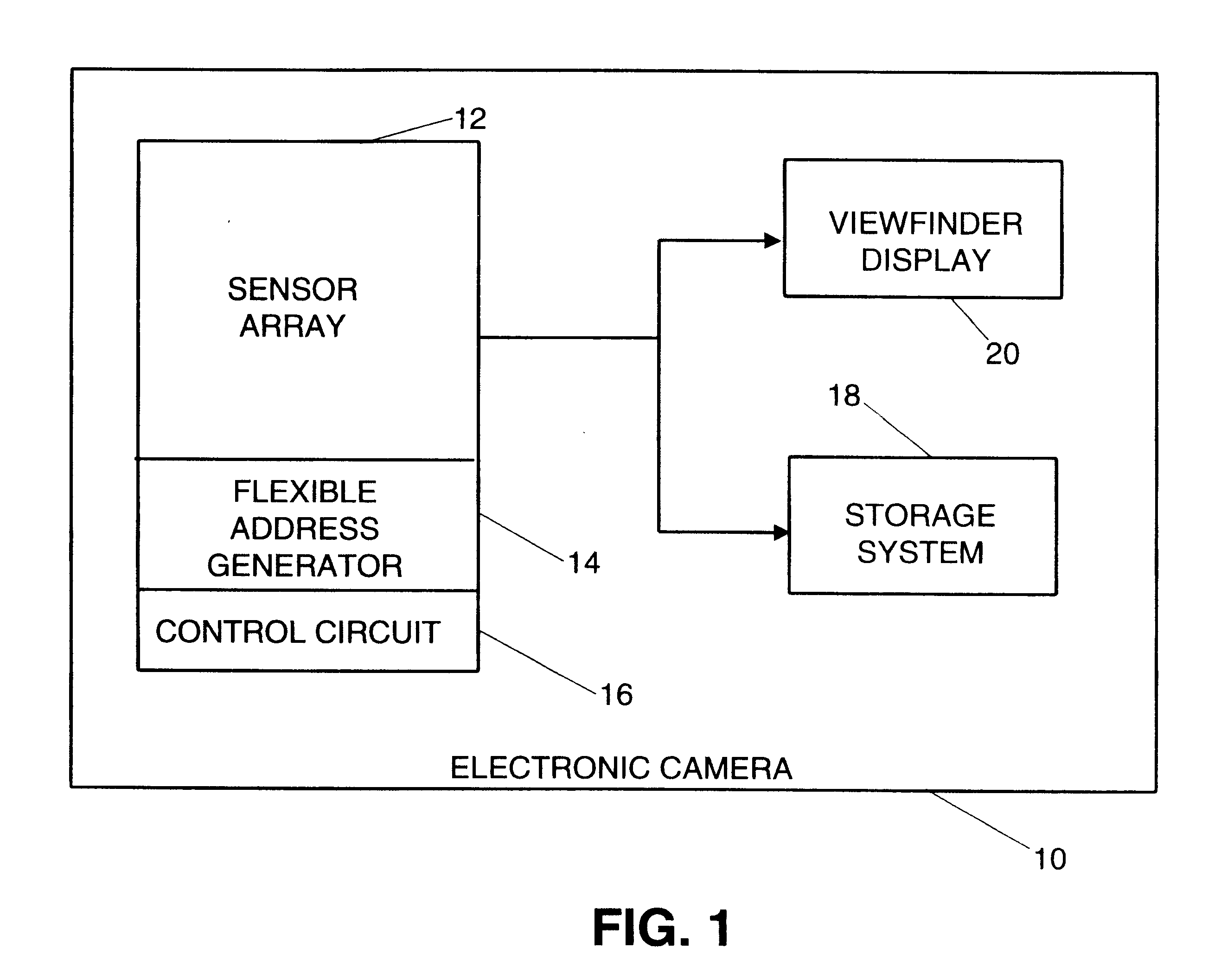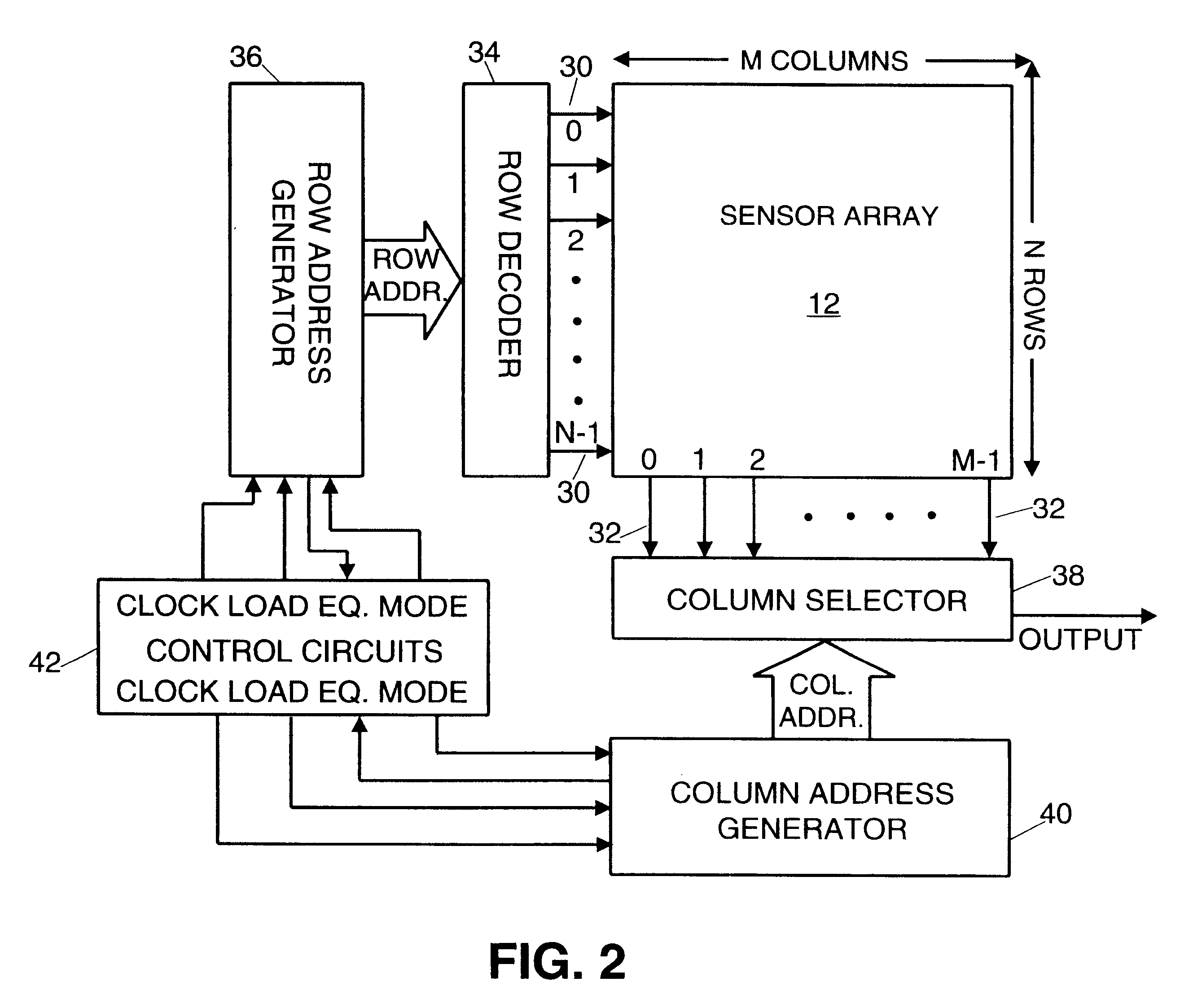Image scanning circuitry with row and column addressing for use in electronic cameras
a scanning circuit and electronic camera technology, applied in the scanning details of television systems, instruments, television systems, etc., can solve the problems of increasing the scanning speed of the imaging system, requiring high-speed address busses, and adding logic which may be a speed bottleneck
- Summary
- Abstract
- Description
- Claims
- Application Information
AI Technical Summary
Benefits of technology
Problems solved by technology
Method used
Image
Examples
Embodiment Construction
Those of ordinary skill in the art will realize that the following description of the present invention is illustrative only and not in any way limiting. Other embodiments of the invention will readily suggest themselves to such skilled persons.
Referring first to FIG. 1, a block diagram of an electronic camera 10 employing the scanning circuitry of the present invention is shown. Electronic camera 10 includes a pixel sensor array 12, such as an active pixel sensor array. According to the present invention, pixel sensor array 12 is controlled by a flexible address generator circuit 14. Flexible address generator circuit 14 is controlled by a control circuit 16 that provides all of the signals necessary to control reading pixel data out of the array 12. The flexible address generator circuit 14 and control circuit 16 may be used to read full high-resolution image data out of the pixel sensor array 12 and store that data in storage system 18. The pixel sensor array 12 is a high-resolut...
PUM
 Login to View More
Login to View More Abstract
Description
Claims
Application Information
 Login to View More
Login to View More - R&D
- Intellectual Property
- Life Sciences
- Materials
- Tech Scout
- Unparalleled Data Quality
- Higher Quality Content
- 60% Fewer Hallucinations
Browse by: Latest US Patents, China's latest patents, Technical Efficacy Thesaurus, Application Domain, Technology Topic, Popular Technical Reports.
© 2025 PatSnap. All rights reserved.Legal|Privacy policy|Modern Slavery Act Transparency Statement|Sitemap|About US| Contact US: help@patsnap.com



